Valladolid Yucatan
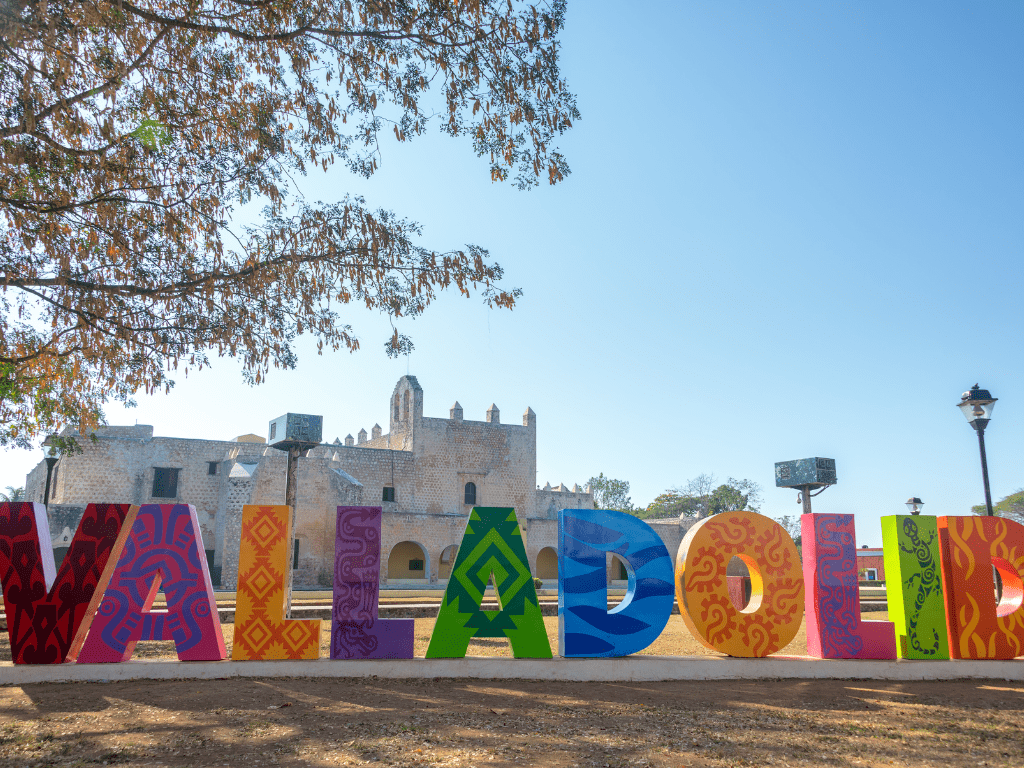
Valladolid Yucatan is a city rich in history and culture, located in the eastern part of the Yucatan Peninsula in Mexico. Founded by the Mayan people in 1543, it is one of the oldest colonial cities in Mexico.
The city was named after the Spanish conquistador Francisco de Montejo who could not pronounce the Mayan name of “Zaci,” so he renamed it to Valladolid, after his hometown in Spain. Despite being a small, quaint town, Valladolid Yucatan offers plenty for visitors to see and explore.
Visitors can stroll through its charming streets with colorful houses lining both sides. It has been designated as a Pueblo Magico (Magical town) by Mexico’s Ministry of Tourism due to its beauty and cultural significance.
The Importance of Valladolid Yucatan in the History and Culture of Mexico
Valladolid Yucatan played a significant role during both pre-colonial times and post-colonial periods. The city was once an important trade center for Mayan people who brought their products like honey, salt, and textiles to sell here.
During Spanish rule, it became an important stopover point for travelers on their way from Merida to Cancun or Tulum. As a result, it was influenced heavily by Spanish colonialism which can be seen from its architecture which features beautiful wrought-iron balconies with intricate designs on houses built around grand plazas.
In addition to this unique blend of Spanish-Maya architecture making it a must-visit destination for history lovers; Valladolid also holds great importance in Mexican independence history. It is where Felipe Carrillo Puerto (a former Governor of the state of Yucatan) declared his support for the Mexican Revolution, and it served as a stronghold for revolutionaries during that period.
Overall, Valladolid Yucatan holds a deep connection to Mexico’s past and present. Its history, architecture, and culture make it an essential destination to explore the richness of Mexico’s cultural diversity.
The Beauty of Valladolid Yucatan

Valladolid Yucatan is a delightful blend of tradition and modernity. The streets are a mix of old-world charm with colorful houses lining up both sides with bougainvillea spilling over walls. The city’s central park is surrounded by stunning colonial-era architecture like the San Bernardino de Siena convent.
As you stroll through Valladolid’s beautiful streets, you will see locals going about their daily routine in traditional Mayan clothing while others are dressed in modern clothing. The market area features fresh produce such as papaya, mangoes, pineapples which visitors can sample or buy at reasonable prices.
Cenote Zaci is one attraction that must not be missed when visiting Valladolid Yucatan. It features crystal-clear water in a natural sinkhole and provides an excellent opportunity for swimming or simply relaxing under its cool waters.
The Traditions and Culture of Valladolid Yucatan
Valladolid Yucatan celebrates many events throughout the year that showcase its rich cultural heritage like Day of the Dead, Easter celebrations or Christmas festivities. During these festivals, visitors can witness traditional dances like the Jarana yucateca performed by locals dressed in colorful costumes or enjoy delicious local cuisine such as Cochinita Pibil (marinated pork) served with handmade tortillas.
One of the most fascinating aspects about visiting Valladolid Yucatan is exploring the local artisans and their crafts. Handcrafted items such as hammocks, embroidered textiles, pottery, and wood carvings are widely available in markets and shops throughout the city.
Surrounding areas to visit from Valladolid Yucatan
Visitors to Valladolid Yucatan can also explore nearby areas such as the famous Mayan ruins of Chichen Itza — a UNESCO World Heritage site that boasts impressive architecture spanning over several centuries. Another must-visit ruin is Ek Balam, which features unique stucco sculptures on its facades.
Valladolid Yucatan is a hidden gem rich in history and culture with many attractions for visitors to see. Its blend of Mayan-Spanish architecture coupled with its diverse traditions offers a glimpse into Mexico’s extraordinary past and present.
The History of Valladolid Yucatan
Mayan Civilization and Its Influence on the City
Valladolid Yucatan sits in the heart of what was once the Mayan world. The ancient civilization that built pyramids, erected grand plazas, and developed a complex writing system called this region home for thousands of years. Evidence of their influence can still be seen today in many ways.
In Valladolid specifically, there are several structures that showcase Mayan architecture. Most notably is the Cenote Zaci located in the city center.
A natural sinkhole that was sacred to the Maya, it has been used for centuries as a source of freshwater for locals and visitors alike. Other examples include typical Mayan arches along some streets and buildings with clear Mayan influences.
Spanish Colonization and Its Impact on the City’s Architecture and Culture
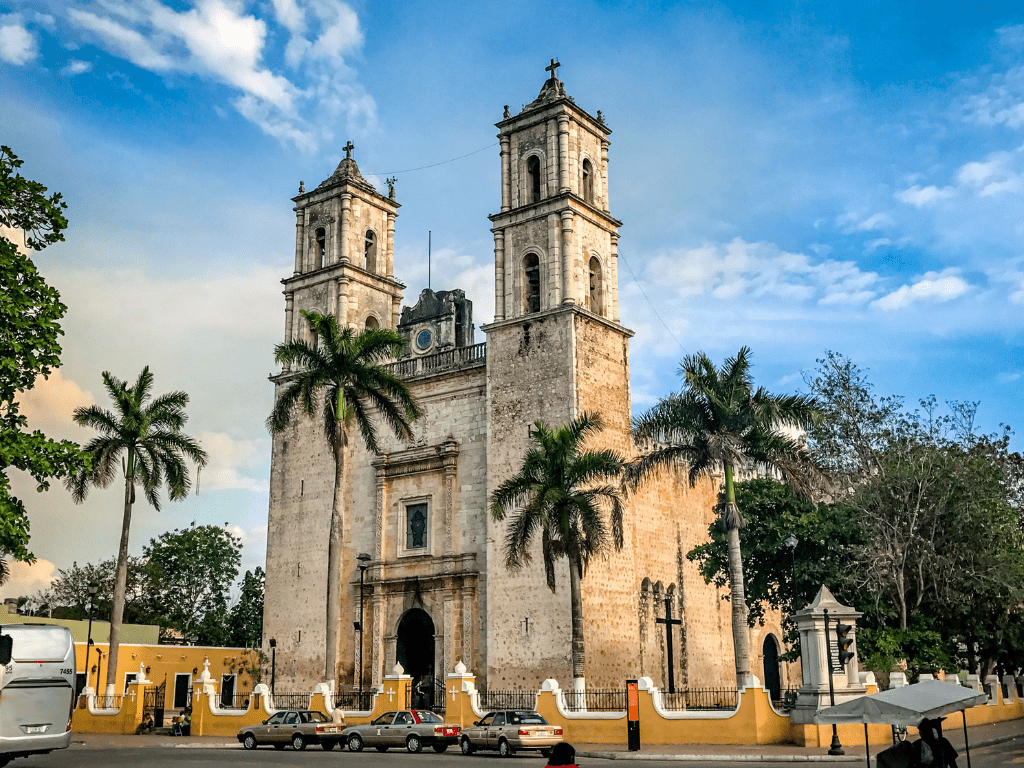
In 1545, Spanish conquistador Francisco de Montejo founded Valladolid Yucatan as part of his campaign to conquer the region. The newly established city quickly became a major economic center thanks to its location between two important trade routes.
The Spanish colonization brought about significant changes in the city’s architecture, culture, and social hierarchy. European-style buildings were constructed out of limestone from nearby quarries using traditional techniques that blended with local styles but also brought new features such as arches or columns.
Catholicism also played a major role in shaping the culture of Valladolid during colonial times. Spain’s influence can be seen throughout the city through its religious offerings like chapels or local temples such as The Chapel of Santa Maria de la Candelaria or San Juan Evangelista church.
The Role of Valladolid Yucatan in Mexican War for Independence
During Mexico’s War for Independence against Spain from 1810-1821, Valladolid Yucatan played a significant role in the fight for freedom. The city was an important center for trade and commerce, making it a prime target for both the colonialists and the rebels who were fighting for independence. In 1810, Valladolid became a battlefield when an uprising led by local hero Jacinto Pat came to the city.
He rallied the people to fight against Spanish rule and succeeded in taking control of Valladolid for a time before being ousted by Spanish forces. Despite setbacks like this, Valladolid continued to be an important hub of resistance until final victory was achieved in 1821.
Today, there are numerous monuments dedicated to those who fought bravely for their country’s freedom during this period. The history of Valladolid Yucatan is rich and varied.
From its early days as part of the Mayan civilization to its role in Mexico’s fight for independence from Spain, this city has played an important role in shaping Mexico’s cultural identity. Its architecture, traditions, and landmarks offer insights into both its past and present while also providing visitors with unique opportunities to explore one of Mexico’s most historic cities.
Culture and Traditions
Religious Festivals: A Celebration of Life and Death
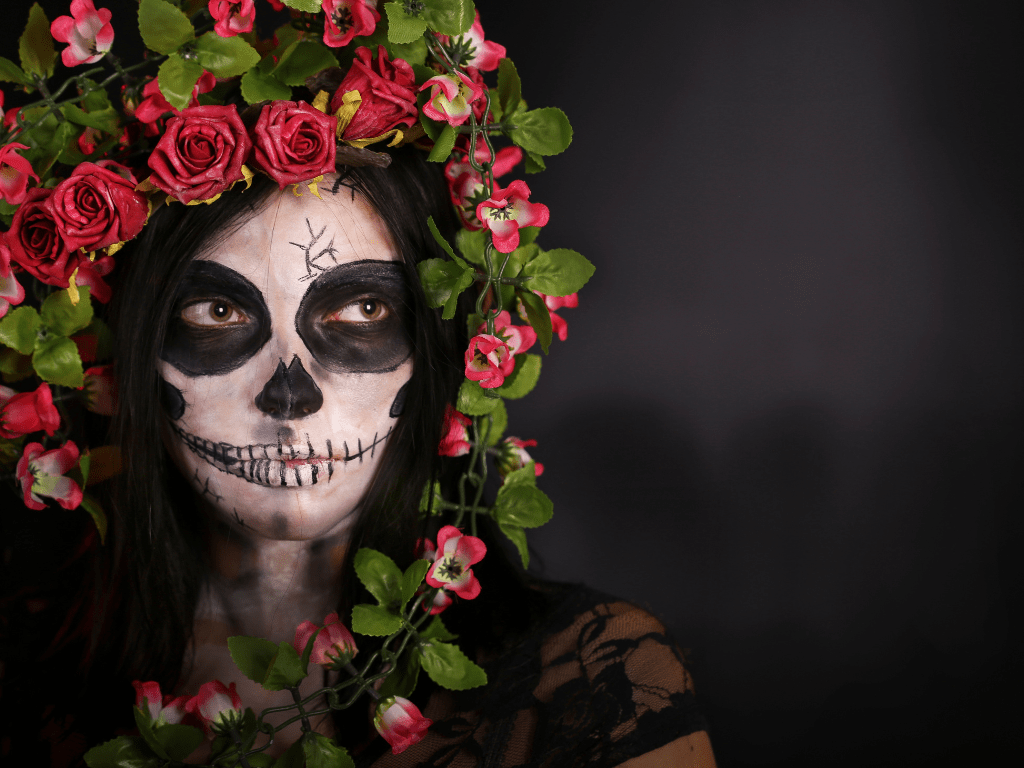
Valladolid Yucatan has a rich tradition of religious festivals that represent the city’s strong connection to its past. Celebrations such as Day of the Dead, Easter, and Christmas are an essential part of the city’s culture. During these festivals, locals honor their deceased loved ones with offerings and visit gravesites in cemeteries around the town.
The Day of the Dead is especially significant in Valladolid Yucatan as it is a time to celebrate life, death, and rebirth. Streets come alive with flower vendors selling marigolds (“cempasuchil”) used to create intricate “ofrendas” or altars honoring ancestors.
Easter is another significant religious festival in Valladolid Yucatan when locals attend mass and participate in processions throughout Holy Week. It is an opportunity for people to reflect on their faith while also enjoying traditional foods such as sweet bread (“pan de muerto”) or fish dishes.
Christmas in Valladolid Yucatan is a joyous celebration full of traditional activities such as posadas (processions representing Joseph and Mary’s search for lodging), caroling (“villancicos”), and fireworks. The highlight is the “Noche Buena” (Christmas Eve) feast where families come together to eat turkey or pork dishes accompanied by tamales, “ponche,” a warm fruit punch, and sweet bread.
Traditional Dances, Music & Cuisine: A Blend of Cultures
Valladolid Yucatan has an eclectic mix of Mayan & Spanish influences reflected in its traditional dances, music & cuisine. Some dances have Mayan roots like “Danza de los Viejitos,” where dancers dress up as old men performing lively steps while others reflect Spanish influence like “Jarana” with its flamenco-style footwork and guitar music. Traditional music in Valladolid Yucatan is a fusion of different genres, including Mayan, Spanish, and African.
Popular instruments include the marimba (a wooden xylophone), guitars, and wind instruments. A local favorite is “trova,” a musical style full of nostalgia and romanticism.
Cuisine in Valladolid Yucatan is a blend of Mayan and Spanish flavors with dishes such as “poc chuc” (grilled pork marinated in sour orange juice) or “sopa de lima” (lime soup). Visitors can also enjoy sweet treats like “marquesitas,” a crispy rolled wafer filled with cheese, chocolate sauce, or condensed milk.
Local Artisans: Crafting Traditions
Valladolid Yucatan boasts many talented artisans who create unique crafts reflective of the city’s culture. These crafts include pottery, embroidery, textiles, wood carvings & jewelry-making. Pottery-making has been practiced in Valladolid Yucatan since pre-Hispanic times using techniques passed down from generation to generation.
The clay used is sourced from local areas and hand-crafted into various shapes before being baked in an oven. Embroidery is another traditional craft where intricate patterns are sewn onto fabric by hand or machine.
These designs can be seen on traditional clothing worn during festivals like Day of the Dead. Textiles such as hammocks made from cotton are also popular in Valladolid Yucatan as they are lightweight yet sturdy for outdoor use.
Local weavers create colorful fabrics using traditional backstrap looms that require skillful patterns. Wood-carving artisans create intricate sculptures made from wood sourced from local areas such as mahogany or cedar trees.
These sculptures often depict religious figures or animals integral to Mayan mythology. Jewelry-making in Valladolid Yucatan blends Spanish and Mayan influences to create unique pieces made from materials such as silver, gold, jade & obsidian.
These pieces are often handmade and feature intricate designs that reflect the city’s culture. Exploring the culture and traditions of Valladolid Yucatan is an enriching experience for anyone interested in Mexican history and culture.
Visitors can immerse themselves in religious festivals, dance to traditional music while enjoying local cuisine, and purchase crafts made by talented artisans. The influence of Mayan & Spanish cultures is evident everywhere you go, reflecting a city deeply connected to its past while embracing modernity.
The Convent of San Bernardino de Siena: A Masterpiece of Colonial Architecture
One of the most beautiful and well-preserved examples of colonial architecture in Valladolid Yucatan is the Convent of San Bernardino de Siena. Built in the sixteenth century by Franciscan monks, this impressive complex features intricate stone carvings, arches, and domes.
The convent’s façade is particularly noteworthy for its ornate decoration, which reflects a fusion of Mayan and Spanish influences. Inside the convent, visitors can admire an impressive collection of colonial artwork, including paintings from local artists.
The convent also houses a museum dedicated to the history and culture of Valladolid Yucatan. Visitors can learn about the region’s rich history through exhibits on Mayan civilization, Spanish colonization, and more recent events such as Mexico’s War for Independence.
Cenote Zaci: A Natural Wonder with Crystal-Clear Waters
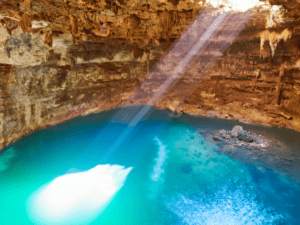
Cenote Zaci is a natural sinkhole located in the heart of Valladolid Yucatan. With its crystal-clear waters and stunning limestone formations, it is one of the most beautiful cenotes in all Mexico. Visitors can swim or snorkel in the cenote’s refreshing waters while taking in breathtaking views of stalactites and stalagmites.
In addition to swimming, visitors can also explore hidden caves within Cenote Zaci by renting snorkeling equipment or taking guided tours. For those who prefer to relax on land, there are plenty of shaded areas where they can sit back and enjoy this natural wonder.
Casa de los Venados: An Impressive Private Collection of Mexican Folk Art
Casa de los Venados (House of Deer) is an exclusive private residence that houses an extraordinary collection of Mexican folk art. Owned by John and Dorianne Venator who have decorated their home with vibrant and colorful pieces of art from all over Mexico.
The collection consists of more than 3,000 pieces including pottery, sculptures, textiles, and paintings. The Venators take pride in the fact that they have opened their doors to the public to share their love for Mexican folk art with visitors from around the world.
They offer tours of their home which allow visitors to learn about the history and significance of each piece in their collection. Overall, Valladolid Yucatan offers a wealth of cultural treasures and natural wonders for visitors to explore.
With its rich history, stunning architecture, beautiful cenotes and impressive collections of folk art, it is one of Mexico’s most unique destinations. Visitors are sure to be captivated by the beauty and charm of this fascinating city.
Surrounding areas to visit from Valladolid Yucatan
Chichen Itza- one of the most famous Mayan ruins in Mexico.
Chichen Itza is located only 40 minutes away from Valladolid Yucatan and is one of the most famous Mayan ruins in Mexico. The archaeological site features some of the most impressive and well-preserved ancient structures, including El Castillo, which is also known as the Temple of Kukulcan. This structure was used for astronomical observations and ceremonial purposes, making it a must-see attraction when visiting Mexico.
Another significant structure at Chichen Itza is the Great Ball Court, which was used for a traditional Mesoamerican ballgame called “juego de pelota.” The game was played with a rubber ball and required players to use their hips to pass it through stone rings attached to the walls. Visitors can also explore other buildings such as El Caracol, a round observatory that was used for studying celestial events, or the Temple of Warriors, which is decorated with intricate carvings of soldiers and historical figures.
Ek’ Balam- another Mayan ruin
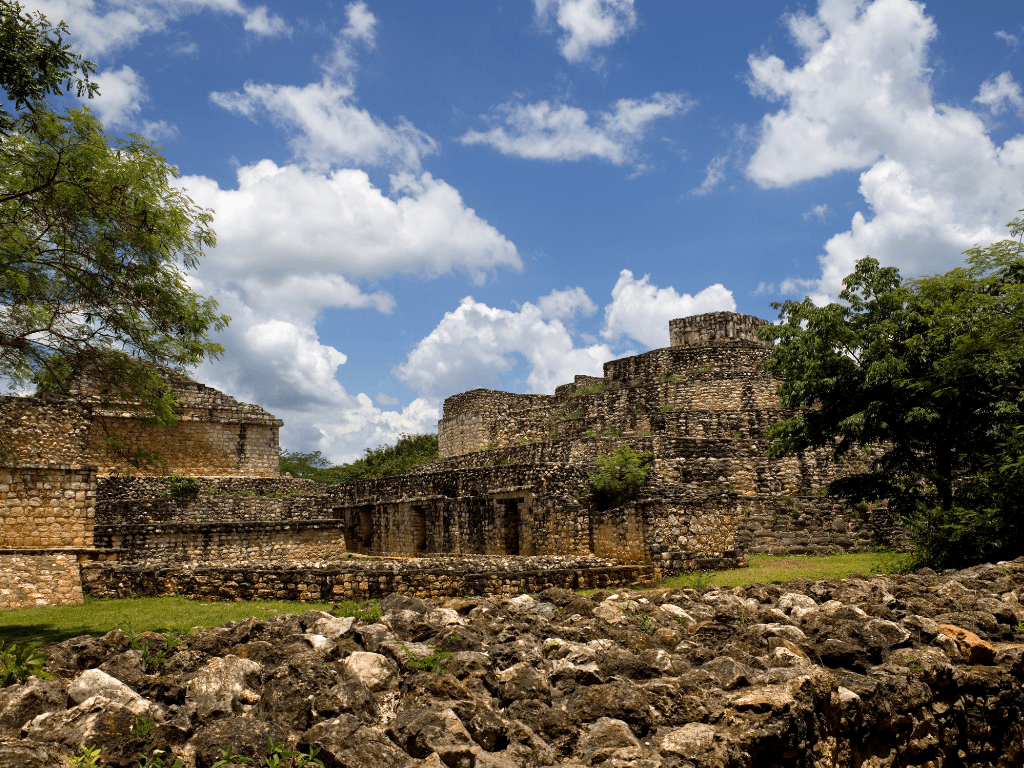
Ek’ Balam is another must-see Mayan ruin located just 30 minutes from Valladolid Yucatan. This archaeological site has been relatively well-preserved over the years and features several unique structures that are not found in other Mayan sites. One such building is called “The Acropolis,” which has an impressive entrance adorned with sculptures of winged creatures known as “aluxes.” Inside this building lies an extensive system of courtyards, platforms, staircases, and rooms that were once used for religious ceremonies and royal residences.
Another notable structure at Ek’ Balam is known as “The Oval Palace,” which was likely designed as a residential house for a Mayan king. Visitors can climb to the top of this structure and enjoy breathtaking views of the surrounding jungle.
Conclusion
Valladolid Yucatan is undoubtedly a fascinating city that has a rich history, culture, and natural beauty. Exploring its surroundings only enhances the experience of what this region has to offer. Chichen Itza and Ek’ Balam are just two examples of the many spectacular archaeological sites located near Valladolid Yucatan.
These sites provide insight into ancient Mayan civilization and offer visitors an opportunity to understand the customs, traditions, and architecture that have shaped Mexican history. Visiting Valladolid Yucatan and its surrounding areas is an excellent educational experience for anyone interested in learning more about Mexico’s past.
Moreover, It is also an opportunity to appreciate its cultural diversity, gastronomy, and scenic beauty. So pack your bags, prepare your adventure spirit and get ready for a journey that will enlighten your mind with everything Mexico has to offer! The Yucatan is full of adventures. Make sure to check out other vacation ideas in the wonderful Yucatan.
